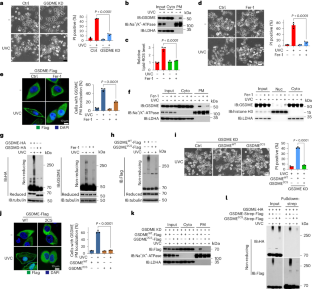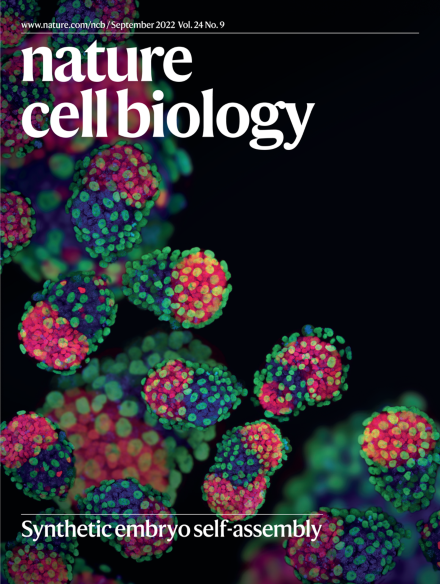Full-length GSDME mediates pyroptosis independent from cleavage
IF 19.1
1区 生物学
Q1 CELL BIOLOGY
引用次数: 0
Abstract
Gasdermin (GSDM) family proteins, known as the executors of pyroptosis, undergo protease-mediated cleavage before inducing pyroptosis. We here discovered a form of pyroptosis mediated by full-length (FL) GSDME without proteolytic cleavage. Intense ultraviolet-C irradiation-triggered DNA damage activates nuclear PARP1, leading to extensive formation of poly(ADP-ribose) (PAR) polymers. These PAR polymers are released to the cytoplasm, where they activate PARP5 to facilitate GSDME PARylation, resulting in a conformational change in GSDME that relieves autoinhibition. Moreover, ultraviolet-C irradiation promotes cytochrome c-catalysed cardiolipin peroxidation to elevate lipid reactive oxygen species, which is then sensed by PARylated GSDME, leading to oxidative oligomerization and plasma membrane targeting of FL-GSDME for perforation, eventually inducing pyroptosis. Reagents that concurrently stimulate PARylation and oxidation of FL-GSDME, synergistically promoting pyroptotic cell death. Overall, the present findings elucidate an unreported mechanism underlying the cleavage-independent function of GSDME in executing cell death, further enriching the paradigms and understanding of FL-GSDME-mediated pyroptosis. Zhou, Jiang, Dai et al report that upon ultraviolet-C radiation, full-length GSDME can induce pyroptosis without cleavage, likely due to conformational change and oxidative oligomerization after increased PARylation and mitochondrial lipid ROS levels.


独立于裂解的全长 GSDME 介导了裂解热
Gasdermin (GSDM)家族蛋白被称为嗜热症的执行者,在诱导嗜热症之前会发生蛋白酶介导的裂解。我们在这里发现了一种由全长(FL)GSDME介导的无蛋白酶裂解的热昏迷形式。强烈的紫外线-C照射引发的DNA损伤激活了核PARP1,导致聚(ADP-核糖)(PAR)聚合物的广泛形成。这些 PAR 聚合物被释放到细胞质中,激活 PARP5,促进 GSDME PARyl 化,从而导致 GSDME 构象发生变化,解除自身抑制。此外,紫外线-C 照射会促进细胞色素 c 催化的心磷脂过氧化,使脂质活性氧升高,PAR 化的 GSDME 会感应到这一点,从而导致 FL-GSDME 氧化寡聚化和质膜靶向穿孔,最终诱发焦痂病。同时刺激 PARylation 和 FL-GSDME 氧化的试剂可协同促进细胞的热猝死。总之,本研究结果阐明了 GSDME 在执行细胞死亡过程中不依赖于裂解功能的一种未报道机制,进一步丰富了对 FL-GSDME 介导的热猝死的范式和理解。
本文章由计算机程序翻译,如有差异,请以英文原文为准。
求助全文
约1分钟内获得全文
求助全文
来源期刊

Nature Cell Biology
生物-细胞生物学
CiteScore
28.40
自引率
0.90%
发文量
219
审稿时长
3 months
期刊介绍:
Nature Cell Biology, a prestigious journal, upholds a commitment to publishing papers of the highest quality across all areas of cell biology, with a particular focus on elucidating mechanisms underlying fundamental cell biological processes. The journal's broad scope encompasses various areas of interest, including but not limited to:
-Autophagy
-Cancer biology
-Cell adhesion and migration
-Cell cycle and growth
-Cell death
-Chromatin and epigenetics
-Cytoskeletal dynamics
-Developmental biology
-DNA replication and repair
-Mechanisms of human disease
-Mechanobiology
-Membrane traffic and dynamics
-Metabolism
-Nuclear organization and dynamics
-Organelle biology
-Proteolysis and quality control
-RNA biology
-Signal transduction
-Stem cell biology
 求助内容:
求助内容: 应助结果提醒方式:
应助结果提醒方式:


